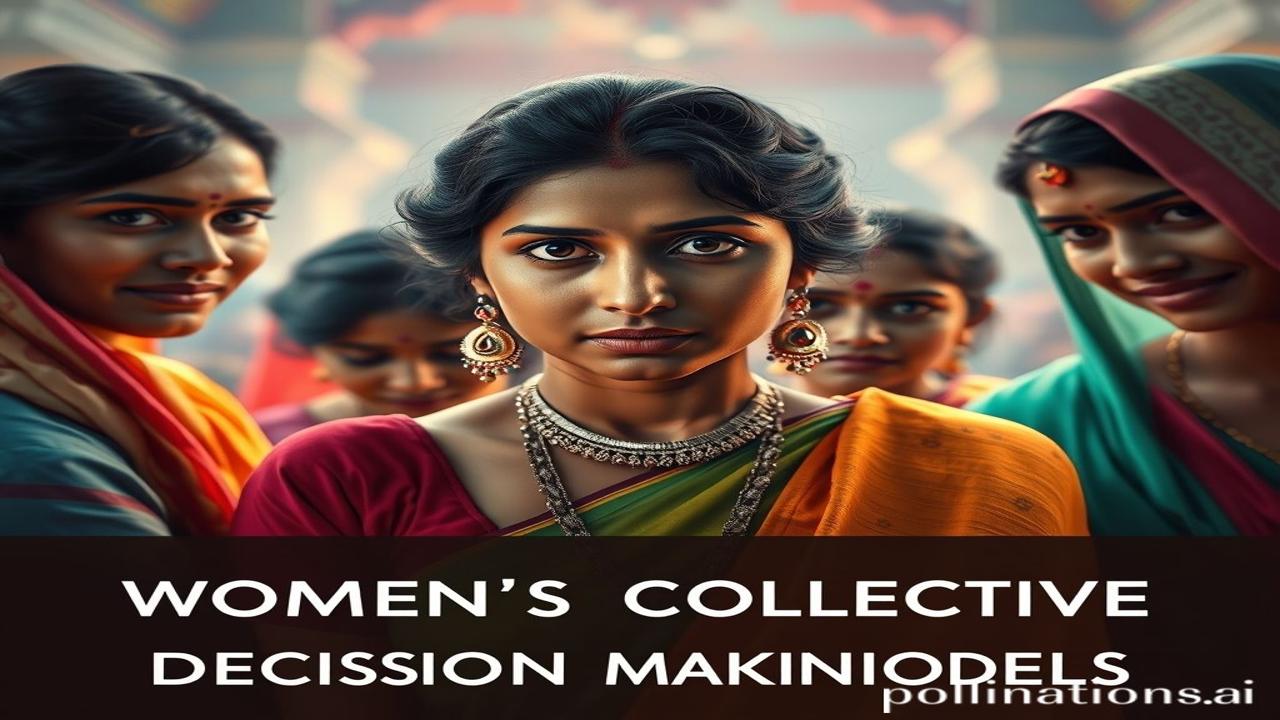Panchayati Raj to Aaj ki Nari Shakti: Women’s Collective Decision-Making in India
Kabhi kabhi main sochti hoon, kya hota agar hamare gaon ki woh purani bargad ki ped, jiske neeche panchayat baithti thi, bol paati? Kya woh humein un women ki kahaniyan sunati, jinhone chup chap, lekin mazboot tareeke se apne community ko aage badhaya? Let’s unravel this thread, shall we?
Historical Background: From Ancien to Aaj
Women’s collective decision-making models aren’t some newfangled trend. In India, panchayats, especially in rural areas, have traditionally been hubs for community decision-making. While historically dominated by men, women’s presence and influence, even subtly, have been crucial. Think about the mahila mandals and self-help groups (SHGs) that started gaining momentum in the 1980s and 90s. These weren’t just groups; they were incubators for women’s leadership and collective action.
But why is it important? Because for centuries, women’s voices were often unheard in formal decision-making spaces. These collective models provided a platform, a manch, for women to voice their concerns, shape policies, and uplift their communities. Aur aaj bhi, they are a powerful tool for social and economic empowerment.
Zamini Sach: Log Aur Jeevan – A Day in the Life
Imagine a village in Rajasthan. Dhool bhari hawayein aur rang-birange ghaghre. Radha, a mother of two, is attending a SHG meeting. Last month, she and other women discussed water scarcity in their village. Today, they’re voting on a proposal to build a rainwater harvesting system.
“Radha, tumhari kya rai hai?” asks the sarpanch, a woman elected by the village.
Radha speaks with confidence, “Hum sab jante hain ki paani kitna zaroori hai. Yeh project humare future ke liye hai.”
It’s not just about water. It’s about education, healthcare, sanitation, and everything that affects their lives. These women, once hesitant to speak in public, are now leading discussions, negotiating with officials, and driving change.
Dharohar Aur Pehchan: Echoes of the Past, Shaping the Future
Today, you see the spirit of these collective models in many forms:
- Gram Sabhas: Where women actively participate in local governance.
- SHGs: Empowering women economically through microfinance and entrepreneurship.
- Women-led Cooperatives: Focusing on agriculture, dairy, and handicrafts.
- Nari Adalats: Providing alternative dispute resolution mechanisms.
This echoes Bharatiyata – the spirit of community, collaboration, and respect for women. It’s about recognizing the inherent shakti within women and providing them with the space to exercise it. By empowering women to make decisions collectively, we are not just uplifting individuals; we are strengthening the entire fabric of our society.
Fun Fact or Myth-Buster
Log samajhte hain ki women’s participation in governance sirf ek “token” gesture hai. Lekin asli sach yeh hai ki studies show that women-led panchayats often prioritize issues like water, sanitation, and education more effectively than male-led ones. They also tend to be less corrupt. Zara soch ke dekho!
Visual & Sensory Layer
Imagine the scent of sandalwood incense during a gram sabha meeting. Feel the rough texture of the handmade khadi sarees worn by the women leaders. Hear the rhythmic chanting of prayers before an SHG meeting begins. See the vibrant colors of the handwoven crafts produced by women artisans.
These sensory experiences create a tapestry of culture, tradition, and empowerment that defines the essence of women’s collective decision-making in India.
Antim Vichar ya Udharan
“Yatra naryastu pujyante, ramante tatra devata:” – Where women are honored, divinity resides.
Let us strive to create a society where women are not just respected, but empowered to lead, to decide, and to shape a better future for all. Let the spirit of the bargad ka ped, the silent witness to countless panchayat meetings, inspire us to listen to the voices of women and build a more just and equitable India.
